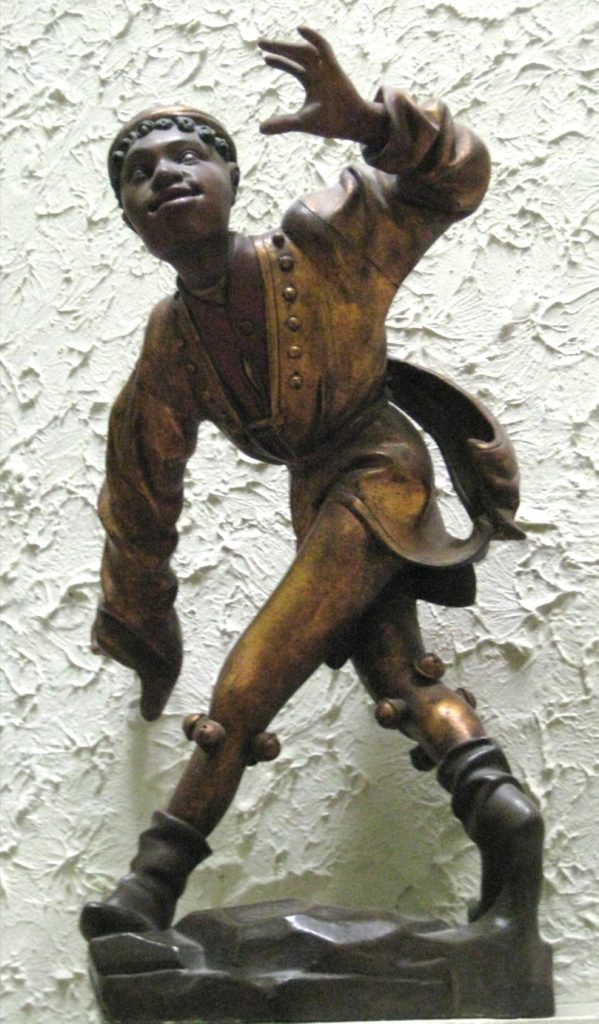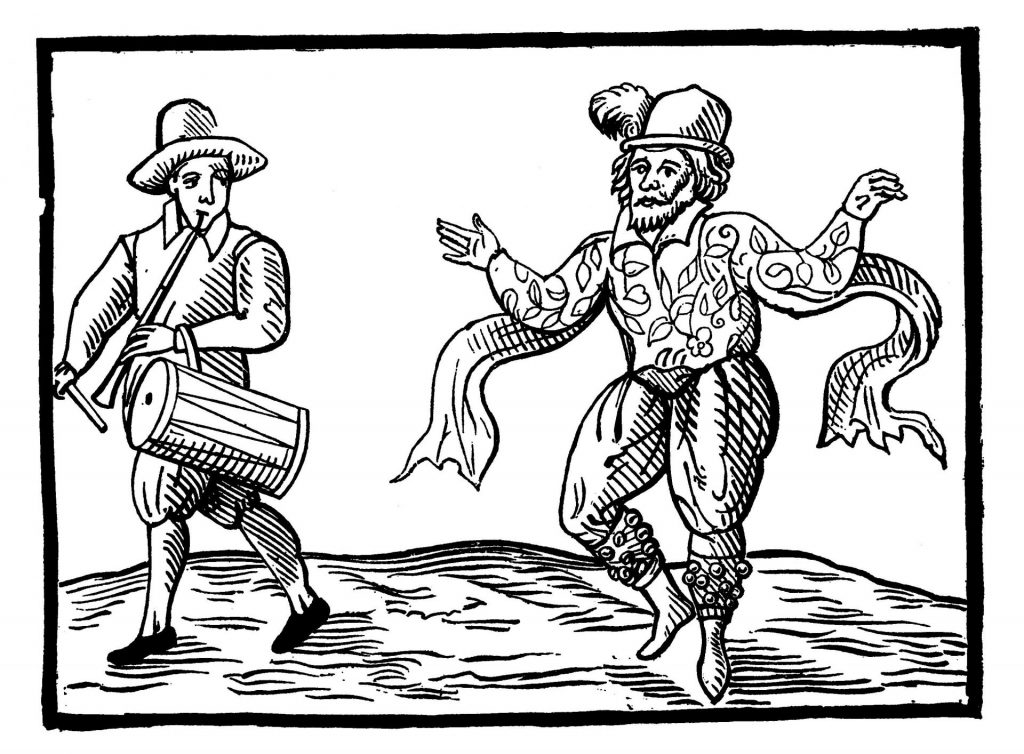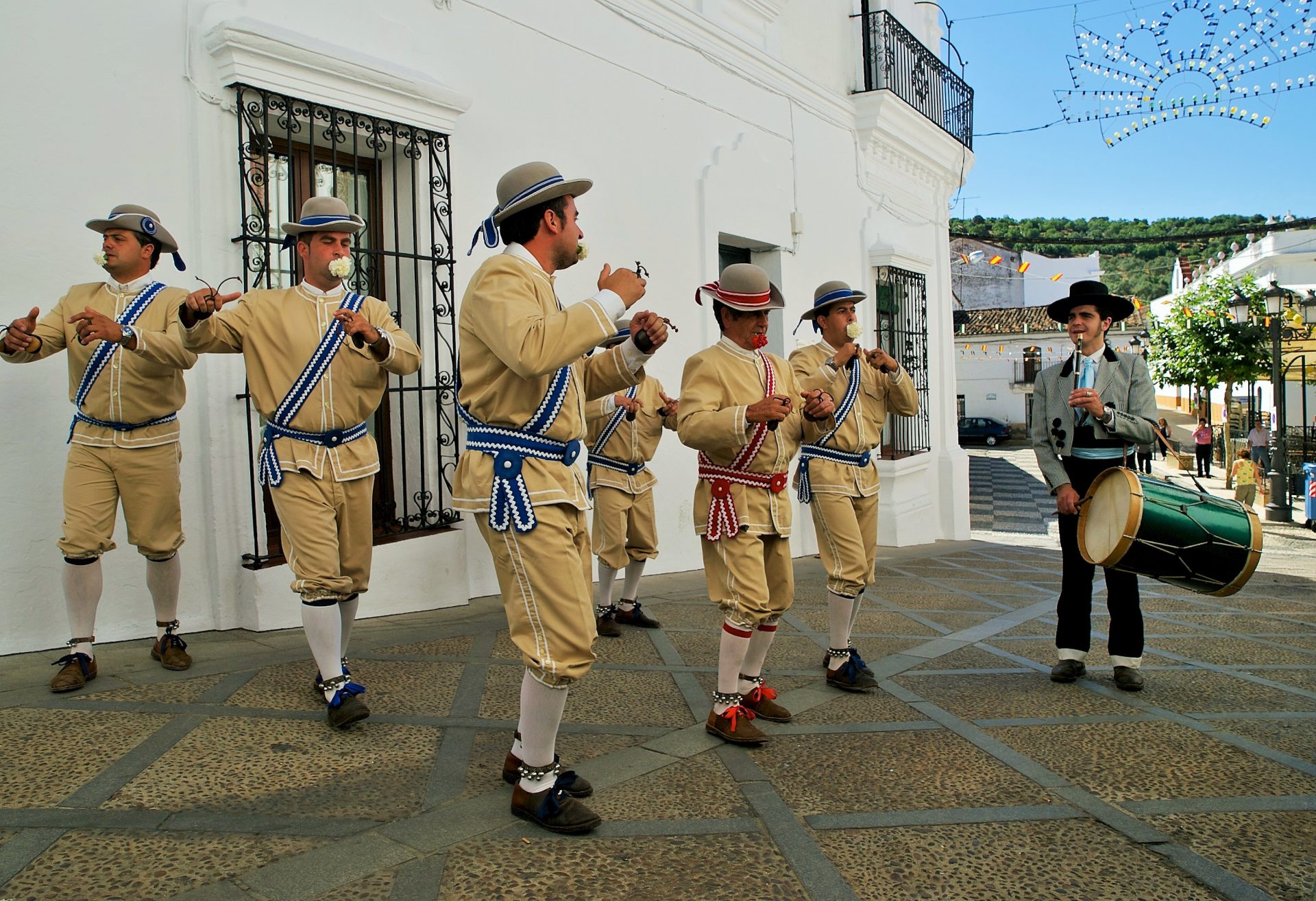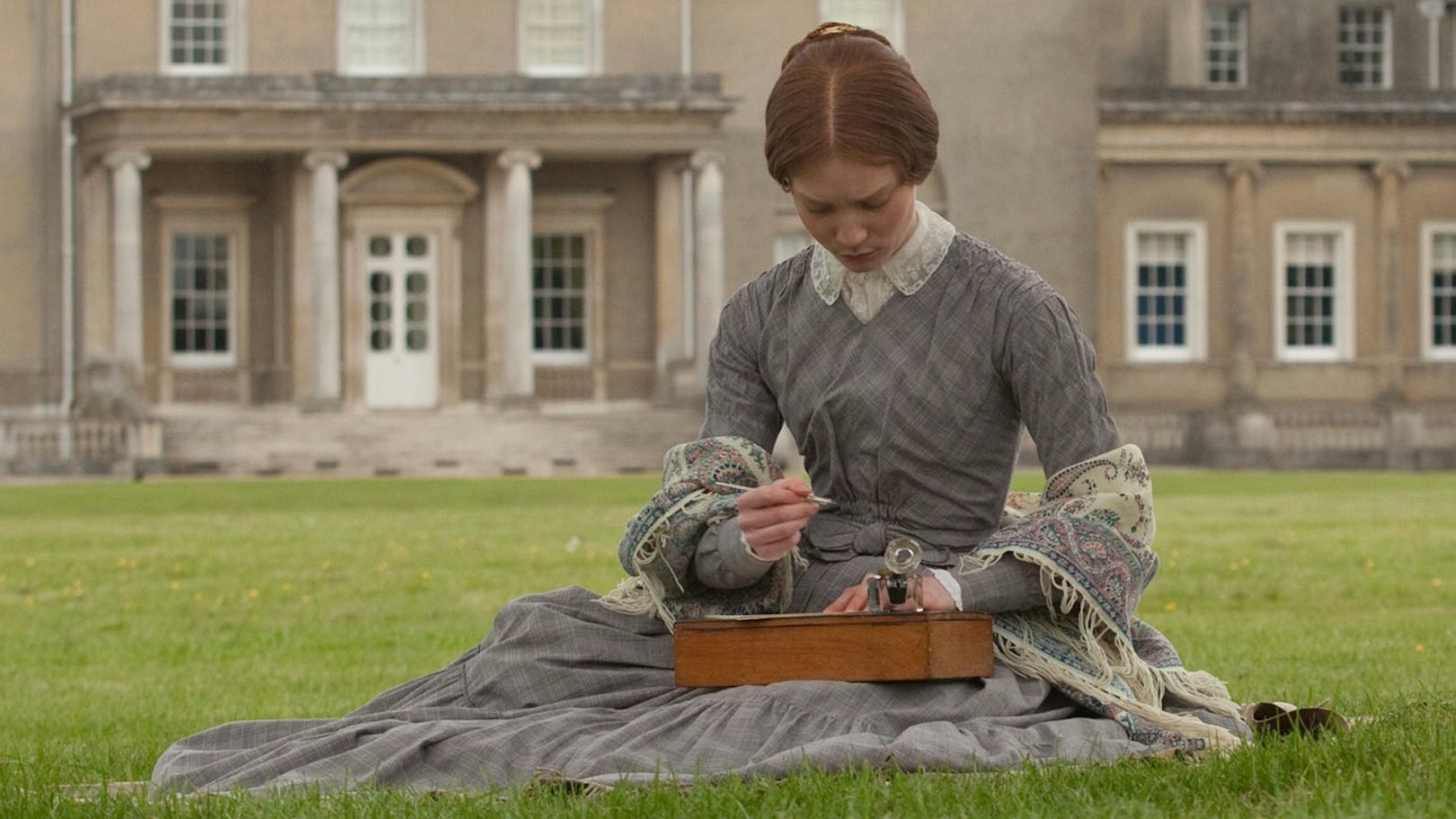The piper plays an impish tune with his left hand and beats a drum with his
right. He is leading a crowd of villagers along a country road. They half-walk,
half-dance, matching the rhythm with castanets. This is the dia del tambor (day of the drum), a scene straight from the Pied Piper of Hamelin that marks the start of our village’s most revered festival.
While Semana Santa (holy week) is the year’s biggest occasion in many Spanish towns and cities, in Fuentes de León it is Corpus Christi, 60 days
after Easter. Over six days, the locals take part in a marathon of religious processions, crown their village queen, and join family and friends to commemorate the Last Supper with plenty of food and drink.
This year’s moveable feast, in mid-June, will be celebrated with particular gusto because it is happening for the first time since 2019, having fallen victim to Covid.
What makes the fiesta special is the village’s most proudly held tradition – a dance troupe of seven local men known as los danzantes. On the Thursday of Corpus Christi they will sashay through its streets for hours on end, dressed in period costume with bells on their ankles and carnations in their mouths (apparently they help keep the dancers hydrated). The tradition dates from the reign of Emperor Carlos V (1519-1556) and has become a village emblem,
commemorated in mosaic on the cobbles of a street named Calle Danzantes, and with a recently erected statue of a dancer, captured mid-step, carnation in mouth.
This is Extremadura, south-west Spain, less than 10km from the border with Andalucía, but the costumes and steps look nothing like the familiar trappings of flamenco. Castanets aside, what they are doing looks a lot like Morris dancing.
We first noticed this phenomenon in the nearby town of Fregenal de la Sierra a few years ago when we attended the International Festival of
the Mountains, held there every August. On stage when we arrived was a troupe of male dancers performing what looked like something you would see in an English village pub car park.

They were dressed in white tunics with red sashes and spangled hats, bells on their stockings, handkerchiefs held between finger and thumb, lifting
their knees and interweaving to the strains of a pipe and drum.
We assumed they were guests from an English hilltop community – there were several groups of international mountain folk waiting in the wings – but when we checked the programme we were taken aback to learn they were from Extremadura. What was this peculiar English tradition doing here?
Morris dancing is not something I had previously taken much interest in,
but the most basic research confirms it did indeed come to England from
Spain, in the 15th century. The word Morris probably comes from Moorish,
after the north Africans who ruled southern Spain for hundreds of years until their final defeat in 1492.
The first written mention in English dates from 1448, when records show the payment of seven shillings to Morris dancers from the Worshipful Company of Goldsmiths in London, and “spangled Spanish dancers” performed an energetic dance for Henry VII at Christmas in 1494.

Back in Spain, Cervantes described preparations for a wedding feast in the
second part of Don Quixote, published in 1615. Here is JM Cohen’s 1946
translation: “He has also got up… some morris dances, for there are many in the village who can jingle and shake the bells to perfection.”
There’s evidence, too, of taking the dance on the road. In 1600, the Shakespearean actor Will Kemp Morris-danced 100 miles from London to Norwich, and wrote about the experience in his book Nine Days Wonder, giving the language an expression for something that’s here today and gone tomorrow. Compare the woodcut depicting his journey with the danzantes of Fuentes de León, accompanied by the celebrated piper/ drummer Félix de Carboneras.

And compare the village’s modern sculpture with the statue of a moriskentänzer from 1480 in Munich’s Stadtmuseum, which points to the
African origins of the dance. It may help to explain the controversial practice of some English Morris dancers who still insist on performing with blacked-up faces.
Idiosyncratically English as they appear, they are harking back to a dance from Muslim-occupied Spain in the Middle Ages, which itself probably harked back to the pagan era. More than five centuries later, the same dances, music and costumes continue in Extremadura, almost unchanged. No nine-day wonder.
Peter Barron is an author for Frommer’s Spain. Follow his blog at adventuresinextremadura.com




